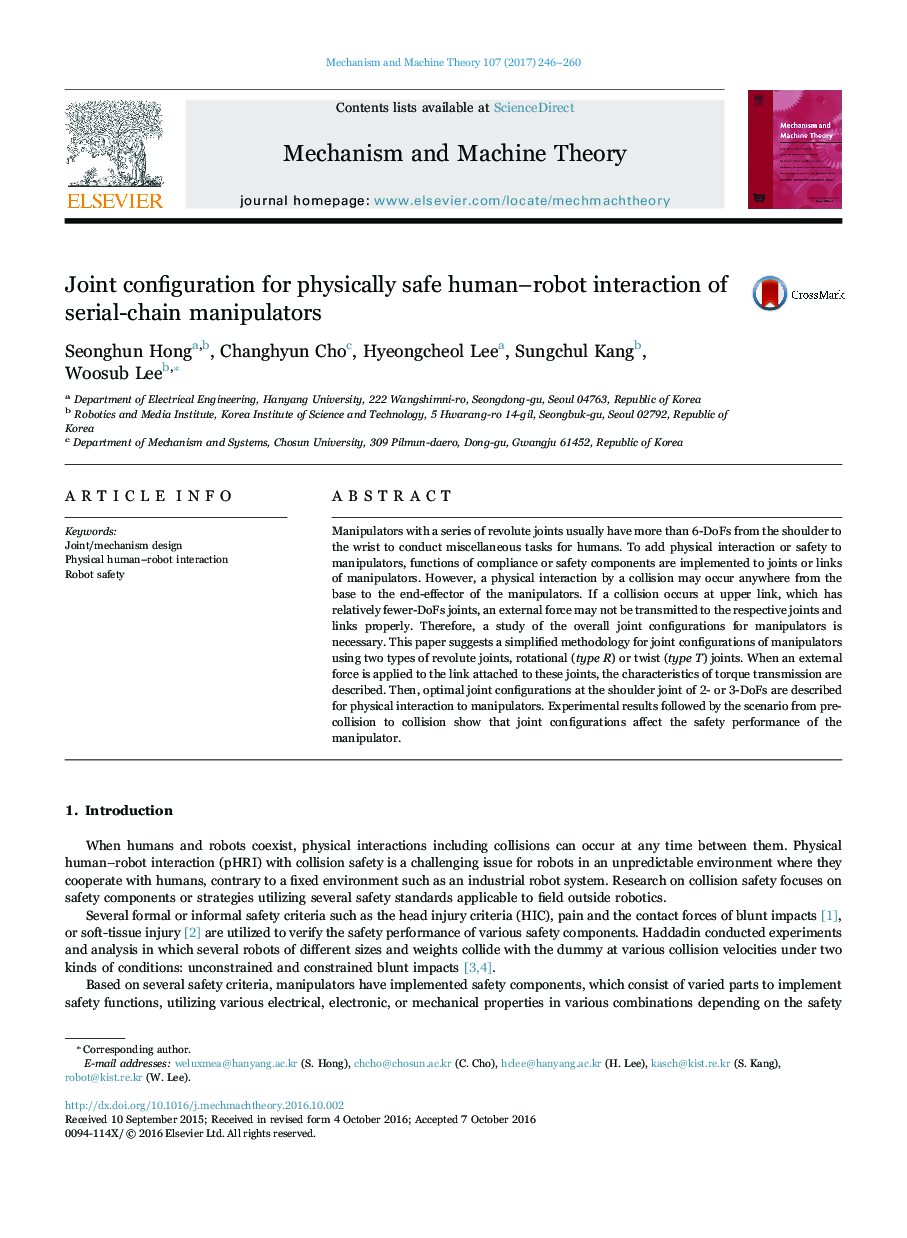| Article ID | Journal | Published Year | Pages | File Type |
|---|---|---|---|---|
| 5018942 | Mechanism and Machine Theory | 2017 | 15 Pages |
Abstract
Manipulators with a series of revolute joints usually have more than 6-DoFs from the shoulder to the wrist to conduct miscellaneous tasks for humans. To add physical interaction or safety to manipulators, functions of compliance or safety components are implemented to joints or links of manipulators. However, a physical interaction by a collision may occur anywhere from the base to the end-effector of the manipulators. If a collision occurs at upper link, which has relatively fewer-DoFs joints, an external force may not be transmitted to the respective joints and links properly. Therefore, a study of the overall joint configurations for manipulators is necessary. This paper suggests a simplified methodology for joint configurations of manipulators using two types of revolute joints, rotational (type R) or twist (type T) joints. When an external force is applied to the link attached to these joints, the characteristics of torque transmission are described. Then, optimal joint configurations at the shoulder joint of 2- or 3-DoFs are described for physical interaction to manipulators. Experimental results followed by the scenario from pre-collision to collision show that joint configurations affect the safety performance of the manipulator.
Keywords
Related Topics
Physical Sciences and Engineering
Engineering
Industrial and Manufacturing Engineering
Authors
Seonghun Hong, Changhyun Cho, Hyeongcheol Lee, Sungchul Kang, Woosub Lee,
